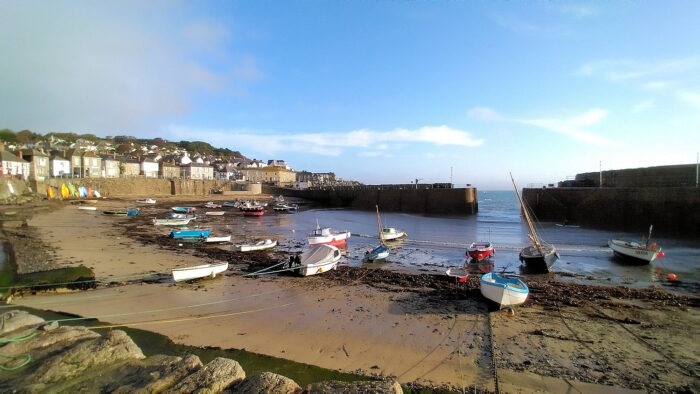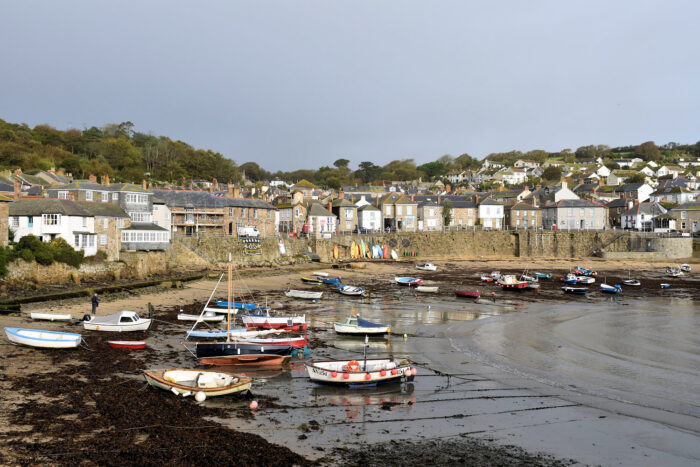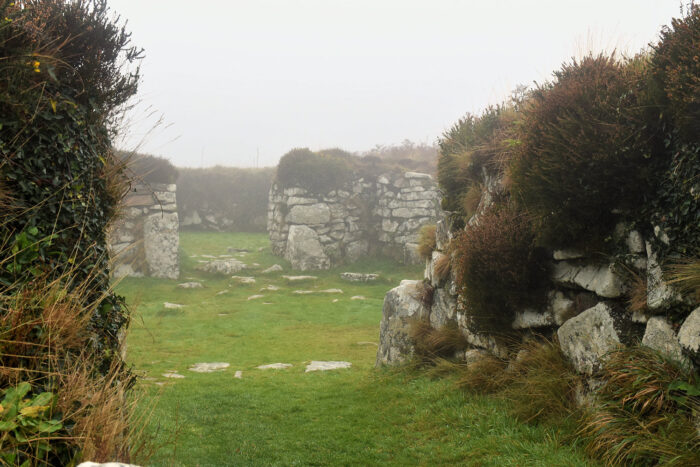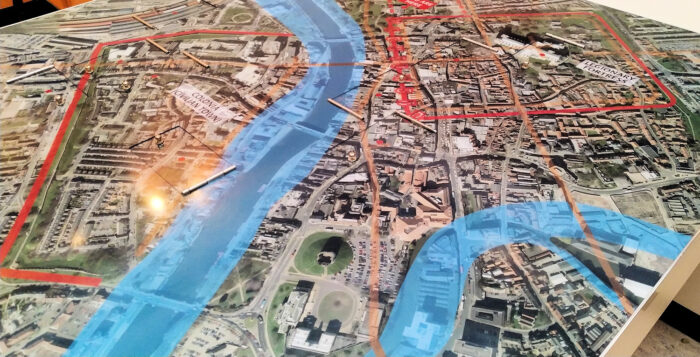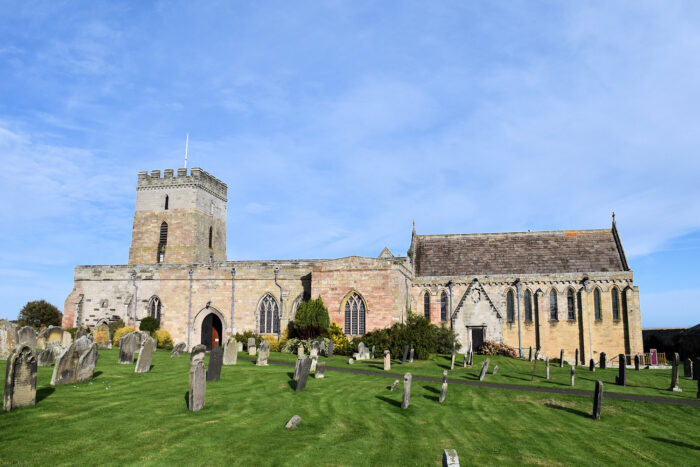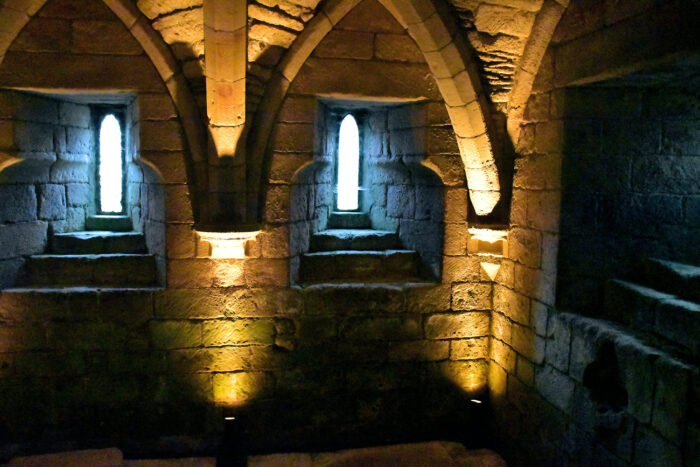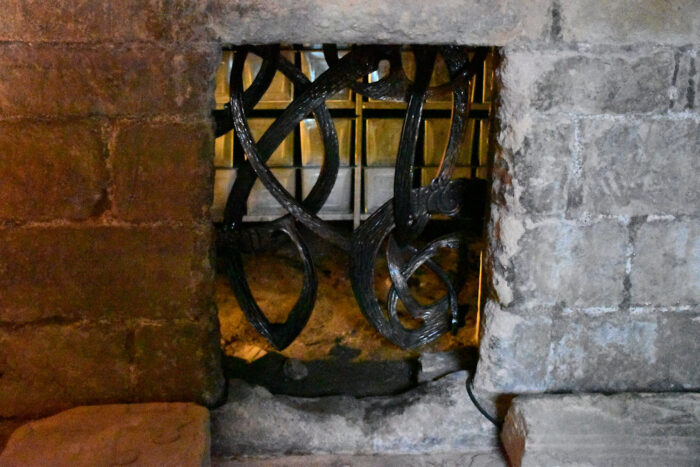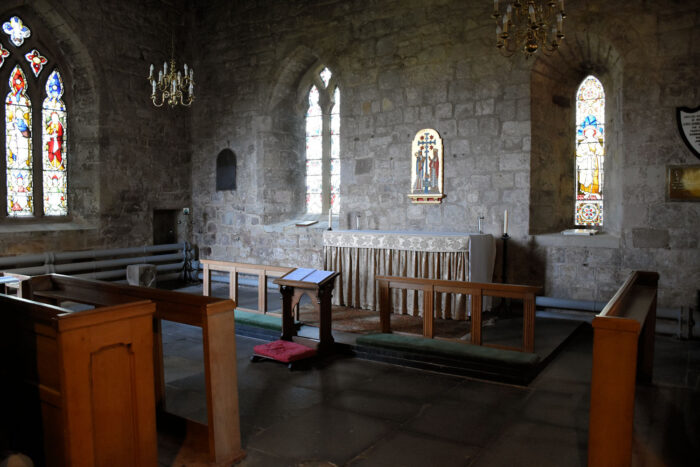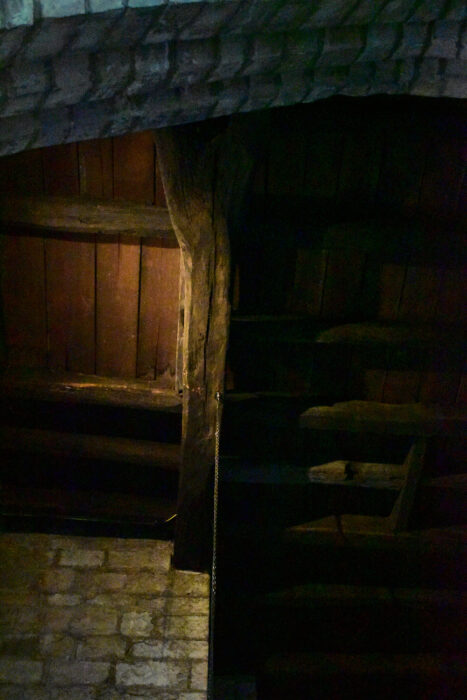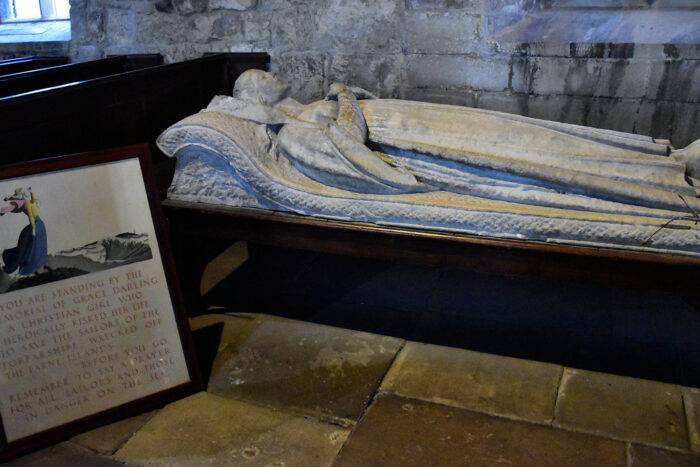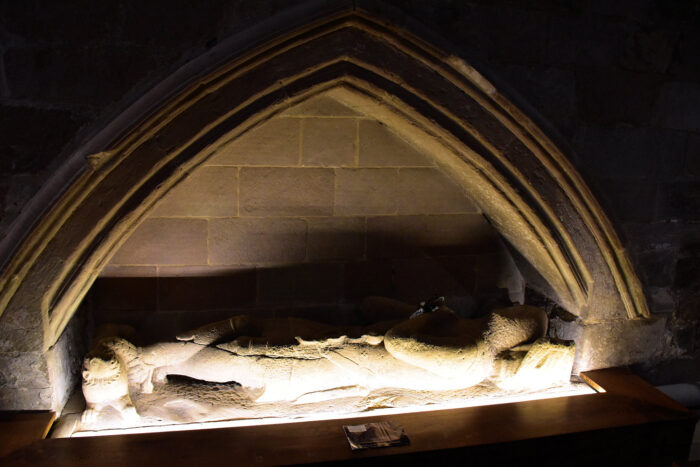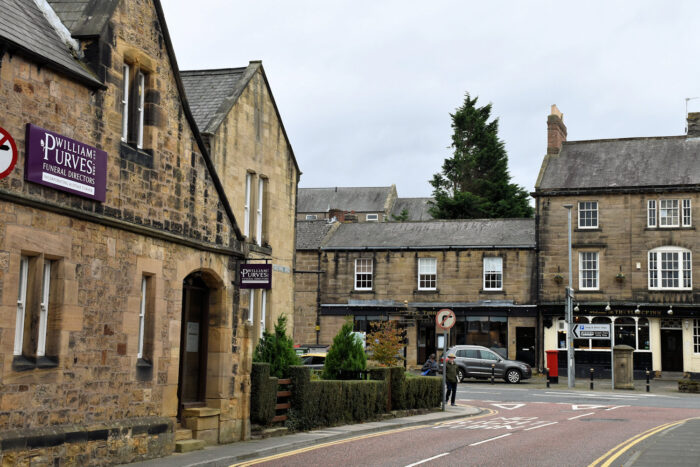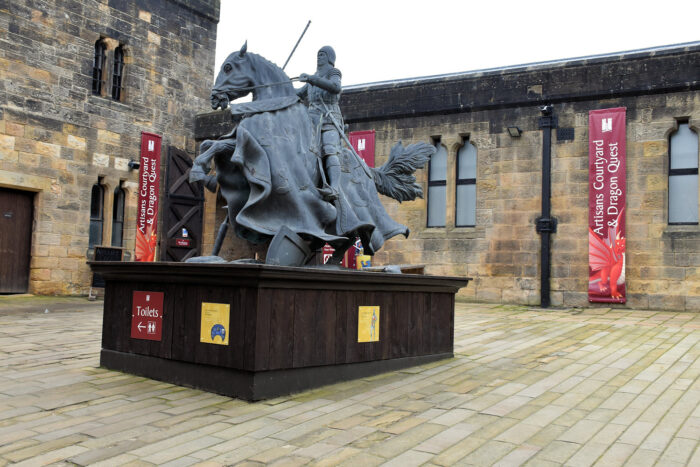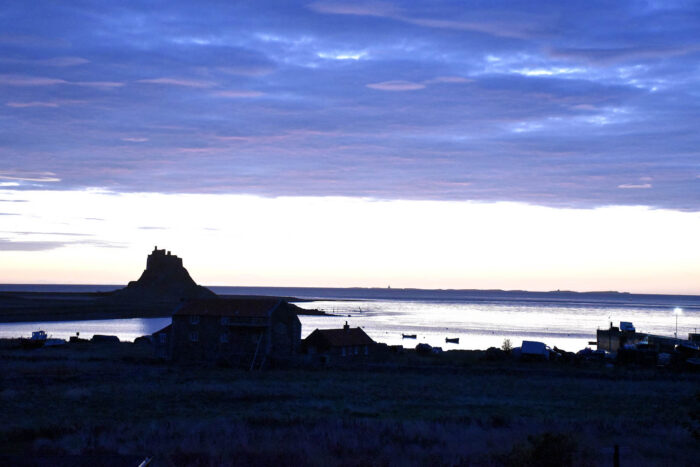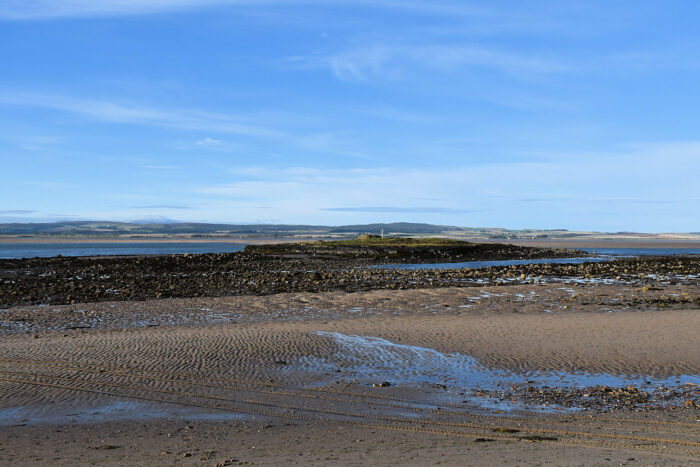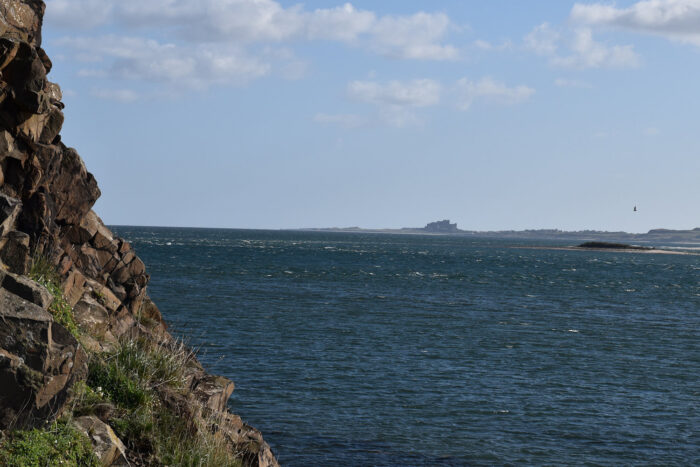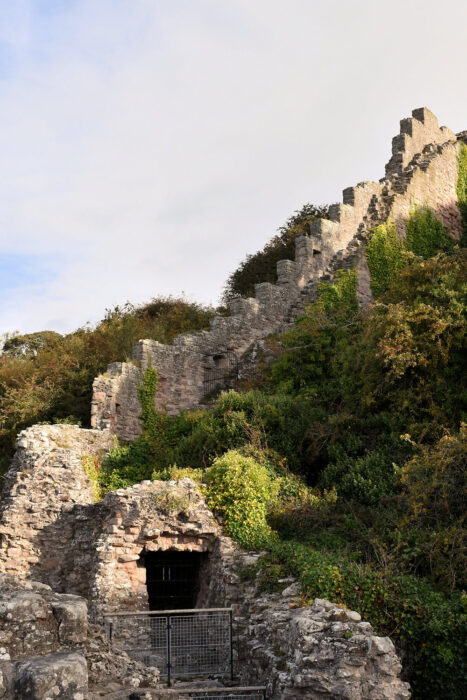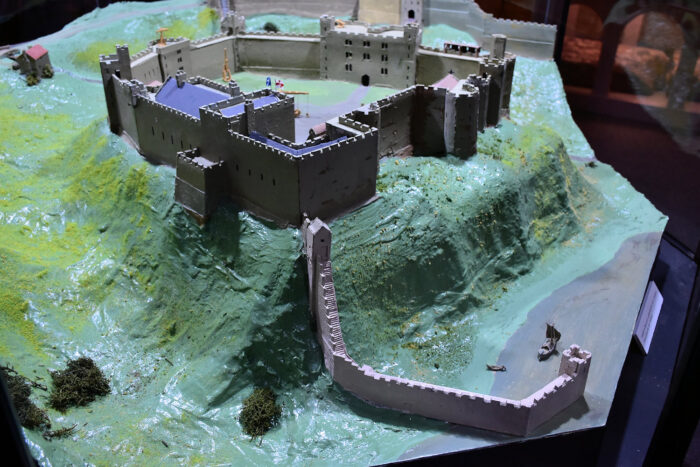If you look at lists of thigs to do in Cornwall, they’re usually full of shops, beaches and quaint harbour towns with narrow streets and interesting little shops. So Mousehole….
England
Chysauster Village & Castle an Dinas
This is Chysauster Village. It’s an Iron Age village. In fact, it’s a Romano-British village from the late first to third centuries. That is a settlement of native Britons (Celts if you want) during the time of the Roman occupation of the islands.
Their village is about ten houses, arranged along a long central space not unlike a street. The houses themselves are built with a central courtyard.
Look at the fog. It’s not just surrounding the site but drifting through it. Like being away in another world.
Three interesting things about York Minster
(I almost called this “You won’t believe what they found under York Minster.”)
Minster is Old English/Anglo-Saxon term, used for an important church, and cathedral is a new-fangled term the base for an archbishop. A church can be either or, as with York Minster, both. It’s been built, (partially) destroyed and rebuilt many times since the 8th century, so I’m not going into that. (If you’re interested.) Instead, just three interesting things:
Interesting thing 1: The Minster is inhabited by teeny, tiny people. (Some are so small you might need to click on a picture to get a bigger version so you can see them.)
Going Roman at the Yorkshire Museum.
The Yorkshire Museum in York has a lot of Roman artefacts (for reasons mnetioned below). Like any sensible museum, they are displayed in different rooms with themes (e.g People of York) but I’ve just pulled out some interesting ones to share. Unfortunately, like any sensible museum, the lighting is low so my selection of objects is further reduced by the those that photagraphed reasonably well. Text is italics is from the panels accompanying the objects.
Catimandua was queen of an Iron Age tribe called the Brigantes. Her tribal territory, which extended across the northern Britain, formed a buffer zone for the Roman Empire with the Picts to the north in Scotland. Her position was threatened by an open revolt led by her husband Venutius. The imperial authorities were forced to intervene. The Ninth Legion was sent north from Lincoln to quell the revolt. They constructed a permanent fortress at the confluence of two rivers and prehistoric route way. This fortress became Eboracum.
This aerial photo shows the location of the fortress overlaid on modern York, to give an idea of the size. The red square on the right marks the location of the fortress, now under the central city area. The “You Are Here” at the very top is the museum. On the left side of the river was the (civilian) town. Just above that is now the railway station. If I remember correctly, it was the site of a cemetery.
St Aidan’s, Bamburgh.
Can you see the railing and sign on the far right side of the building? Guess what’s down there.
There’s a crypt, there’s a crypt with an ossuary and a video presentation about the inhabitants of the ossuary.
Basically, they discovered a 7-8th century graveyard in the dunes surrounding the castle. From the remains, archaeologists were able to determine things about their daily life, and then they were placed into boxes and put into the crypt.
The church is quite interesting inside too. (There’s a guided walk leaflet.) It does back to the 12th cenury, but there’s not much left of that building except for bits like the right hand window (the shape is different to the others).
Originally, St Aidan (remember him from Holy Island) erected a wooden church here. The story goes that he was leaning against a wall beam when he died. After that, the beam survived two fires and it’s considered miraculous. Now it is in the roof of the current church.
There is an effigy of Grace Darling (of the lighthouse resece) which used to out in the grave yard but has been replaced by a newer one. Across the road from the church is a Grace Darling museum.
And a unknown knight effigy.
A Day Trip To Alnwick
So this is Alnwick (pronounced Annick), the county town of Northumberland (the administrative centre). It has two major tourist attractions: the castle and the garden.
Alnwick Castle has the feel of a theme park, without the park. It feelsl ike it’s set up to have a lot going on but it wasn’t going on.
Holy Island: one last thing before leaving
That’s a view to wake up to!
Now, the little island I showed yesterday, St Cuthbert’s Island, turns out to be a tidal island. (A tidal island off a tidal island.)
So at low tide you can walk out there, and low tide of course is currently early in the morning. (It was about 9 am when I went down.)
Holy Island
South of Berwick, just off the coast, is Holy Island, a tidal island with an interesting history. It can only be accessed when the tide is low enough to expose the causeway. So if you want to visit, it has to either be during this low tide time, or an overnight stay. Today, the low time ended about 1.35 pm, which meant at 1 pm everything started closing. As most places don’t open until 10 am, it’s not a long visiting period. Fortunately, I stayed overnight.
There are two main attractions on Holy Island. The Prior and (seen in the background here) and the castle that is not a castle.
There is also a good view of the castle that is a castle, but that’s on other other side of the water so we’ll ignore it.
Berwick-upon-Tweed: defences
Berwick has walls and ramparts and gates and bits of castle. It’s all a bit complicated, but I’ll see if I can make sense of it.
The White Wall, with steps that originally ran up to the castle. (I think the front bit is a later addition for atillery.) Most of the castle remains were removed c.1850 to build the train station.
